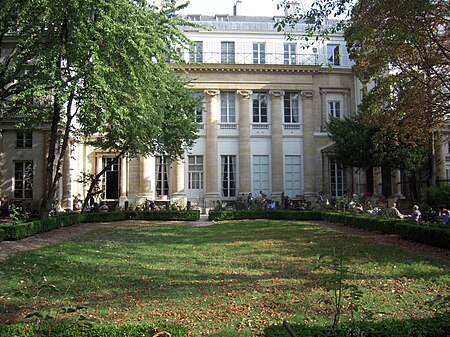The International Office of Public Hygiene, also known by its French name as the Office International d'Hygiène Publique and abbreviated as OIHP, was an international organization founded 9 December 1907 and based in Paris, France. It was created to oversee international rules regarding the quarantining of ships and ports to prevent the spread of plague and cholera, and to administer other public health conventions.The OIHP was part of the complex structure known as the Health Organization (Organisation d'Hygiène) of the League of Nations, in an often-competing, and sometimes collaborative relation with the League of Nations' Health Committee.The OIHP was dissolved by protocols signed 22 July 1946 and its epidemiological service was incorporated into the Interim Commission of the World Health Organization on 1 January 1947. However, the OIHP remained in existence legally until 1952.
As of 1933, the OIHP was composed of the following contracting parties: Argentina, 1910 Australia, 1909 Belgian Congo, 1927 Belgium, 1907 Bolivia, 1912 Brasil, 1907 UK British dominions, 1927 UK British India, 1908 Bulgaria, 1909 Canada, 1910 Chile, 1912 Denmark, 1913 Netherlands (Dutch Indies), 1925 Egypt, 1907 France, 1907 French Algeria, 1910 French Equatorial Africa, 1929 French Indochina, 1914 French West Africa, 1920 Germany, 1928 UK (Great Britain), 1907 Greece, 1913 Kingdom of Hedjaz, 1932 Ireland (Irish Free State), 1928 Italy, 1907 Japan, 1924 Luxemburg, 1926 Madagascar, 1920 Morocco, 1920 Mexico, 1909 Monaco, 1913 Netherlands, 1907 Norway, 1912 New Zealand, 1924 Peru, 1908 Persia, 1909 Poland, 1920 Portugal, 1907 Romania, 1921 Sudan, 1926 Sweden, 1909 Switzerland Czechoslovakia, 1922 South African Union, 1919 Spain, 1907 French protectorate of Tunisia, 1908 Turkey, 1911 USA, 1907 Soviet Union, 1926 (initially accessed as Russia in 1907) Uruguay, 1913The OIHP was managed by a "Permanent Committee" chaired successively by Rocco Santoliquido (1908-1919), Oscar Velghe (1919-1932), George S. Buchanan (1932-1936). Important personalities were taking part in the work of the OIHP such as Camille Barrère.










